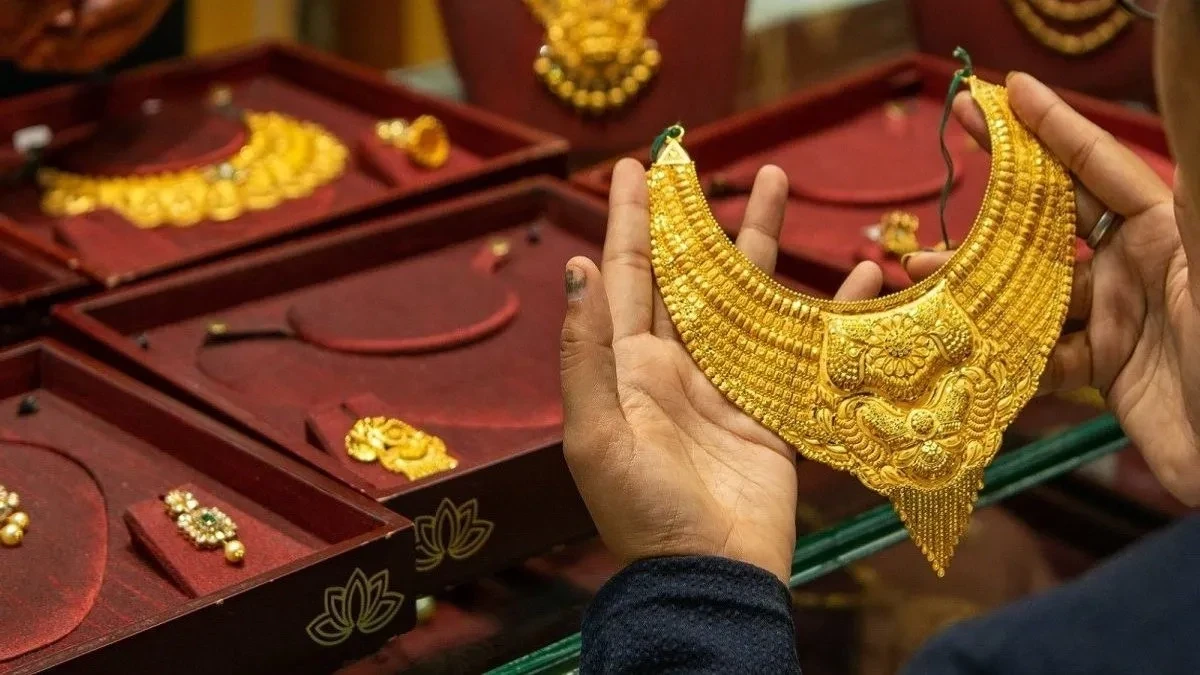When purchasing gold jewellery, additional costs known as “making charges” are involved. These fees cover the artistry and labour required to create the jewellery.
They can significantly impact the total cost, varying based on design, stones, and metal type. Understanding these charges is essential for anyone planning to buy gold.
In India, making charges for gold jewellery encompass the cost of transforming raw gold into finished pieces. This includes designing, conceptualising, and crafting the jewellery. Prices differ across shops and cities due to these charges. Typically, a city’s association sets daily gold prices. However, common factors like taxes and purity ensure no drastic price differences.
Gold Making Charges in India
The making charges for 22-carat gold usually range from 5% to 25% of its value. This depends on design complexity and the jeweller’s reputation. The final price of gold is calculated using this formula:
Final price = (Price of gold per gram x weight in grams) + making charges + GST on price of jewellery and making charges.
Currently, a 5% GST applies to both making charges and jewellery repairs. This tax is shared between state and central governments.
Factors Influencing Gold Jewellery Making Charges
The quality and purity of raw gold influence the creativity needed for crafting jewellery. Checking the Bureau of Indian Standards (BIS) hallmark can confirm gold purity. Complex designs require more skill, leading to higher making charges. For instance, wedding or studded jewellery often incurs higher fees than plain pieces.
Transportation costs also affect making charges. These include storing, packing, moving, and transporting gold. Delays in transportation can add to these costs.
Wastage Charges for Gold in India
Wastage charges account for minor gold losses during crafting processes like melting or cutting. These losses are typical in creating ornaments and are passed on to customers as a percentage of the gold’s weight. Wastage fees typically range from 5% to 7%, but can exceed 10% for intricate or handmade designs.
Traditional methods often result in some waste due to cutting or shaping losses. Jewellers charge wastage fees to cover this loss. Modern techniques have reduced raw gold wastage somewhat.
Making vs Wastage Charges
Making charges cover producing jewellery from raw materials, while wastage fees compensate for material loss during production.
How To Calculate Gold Making Charges?
Understanding how making charges are calculated helps buyers make informed decisions. There are two main methods:
- Cost Per Gram: The price is fixed per gram; multiply by weight for total charge.
- Percentage: Calculated as a percentage of total gold value; higher percentages mean higher costs.
Gold Jewellery Making Charges Examples
If you purchase 10 grams of gold at a flat rate of Rs. 500/gm, your making charge would be Rs. 5000 (10 x 500). Alternatively, if buying Rs. 7 lakh worth of gold with a 10% charge rate, you’d pay Rs. 70,000 in making fees (10% of Rs. 7 lakh).
Avoiding Hidden Charges
Avoid hidden costs by being aware of potential extra fees such as melting or purity testing fees and ensuring accurate weighing scales are used to prevent discrepancies in weight measurement.
Sellers might use lower rates than market prices or provide unclear invoices that hide deductions.
Bargaining effectively requires understanding these aspects thoroughly when buying gold jewellery. Opting for a fixed rate benefits buyers when prices rise while choosing percentage calculations suits falling prices better.
